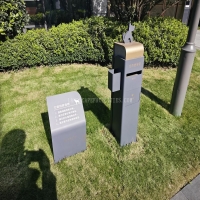Welcome to the website for landscape facilities products and knowledge.
How does the manufacturer ensure the table’s compatibility with various outdoor surfaces?
Manufacturers employ multiple innovative strategies to guarantee their outdoor tables remain stable and functional across diverse surfaces. The cornerstone of this compatibility lies in sophisticated leg adjustment systems. Many premium outdoor tables feature integrated leveling mechanisms or adjustable feet that can be individually modified to compensate for uneven terrain. This technology proves particularly valuable when placing tables on grassy lawns, sloped patios, or textured deck surfaces where perfect flatness is rarely achievable.
Beyond physical adjustments, manufacturers carefully select materials that enhance surface adaptability. Powder-coated aluminum frames resist corrosion while maintaining structural integrity across different environments. Tables designed with wider foot bases distribute weight more effectively, preventing sinking into soft ground while remaining secure on hard surfaces. Some manufacturers incorporate removable rubber caps that can be attached to prevent scratching on delicate surfaces like wood decks or removed for better grip on stone patios.
The engineering extends to load distribution principles. Strategically placed cross-supports and reinforced leg joints ensure the table maintains stability even when placed on slightly uneven surfaces. For particularly challenging installations, some manufacturers offer ground penetration stakes or additional stabilization kits as accessories. These thoughtful design elements work collectively to deliver reliable performance whether the table is positioned on gravel, concrete, artificial grass, or composite decking, ensuring your outdoor dining experience remains undisturbed by the surface beneath.
Related search:

Recommendation
Outdoor cat and dog feces trash can; Community pet trash can; Metal multi-color design